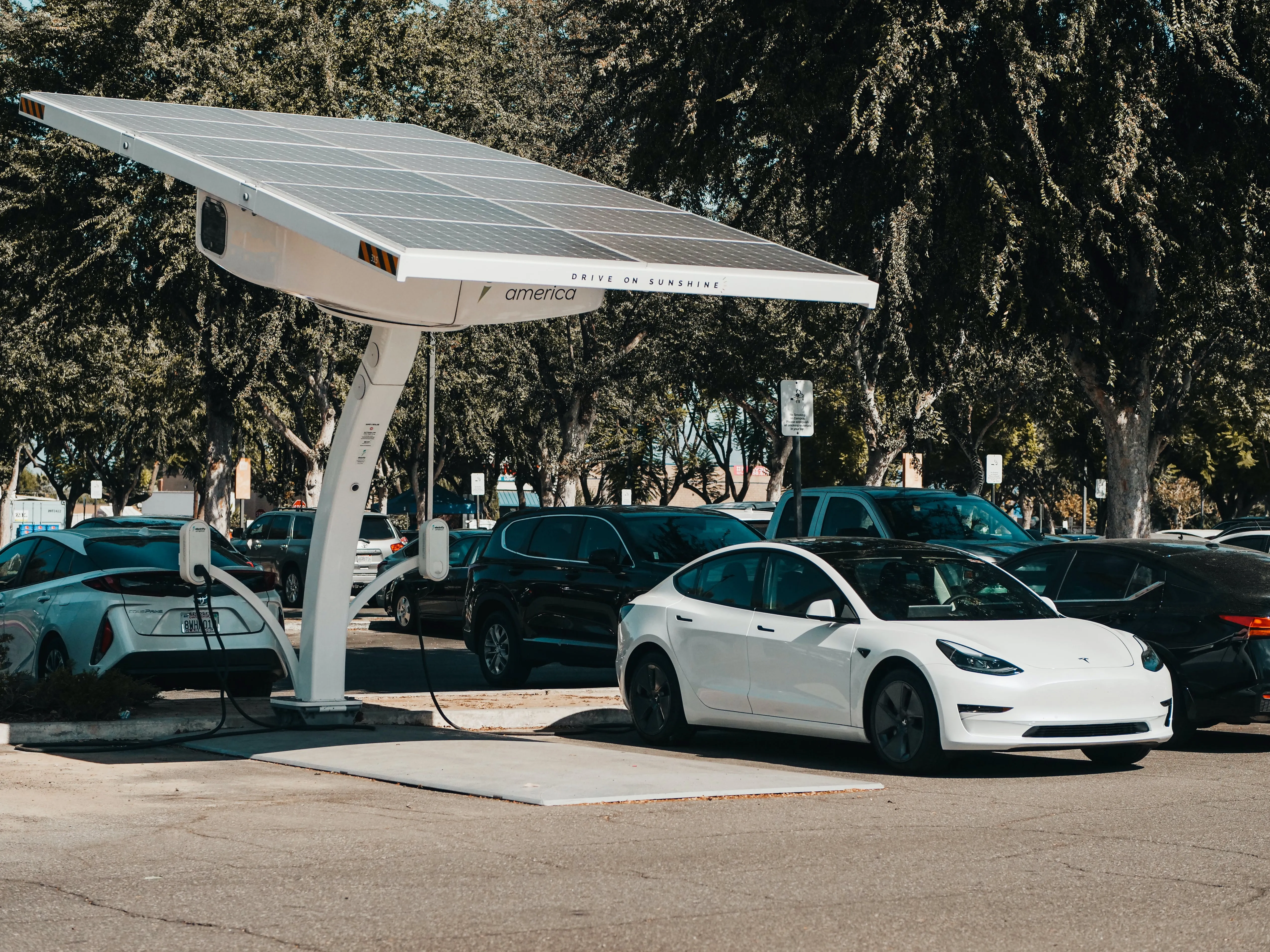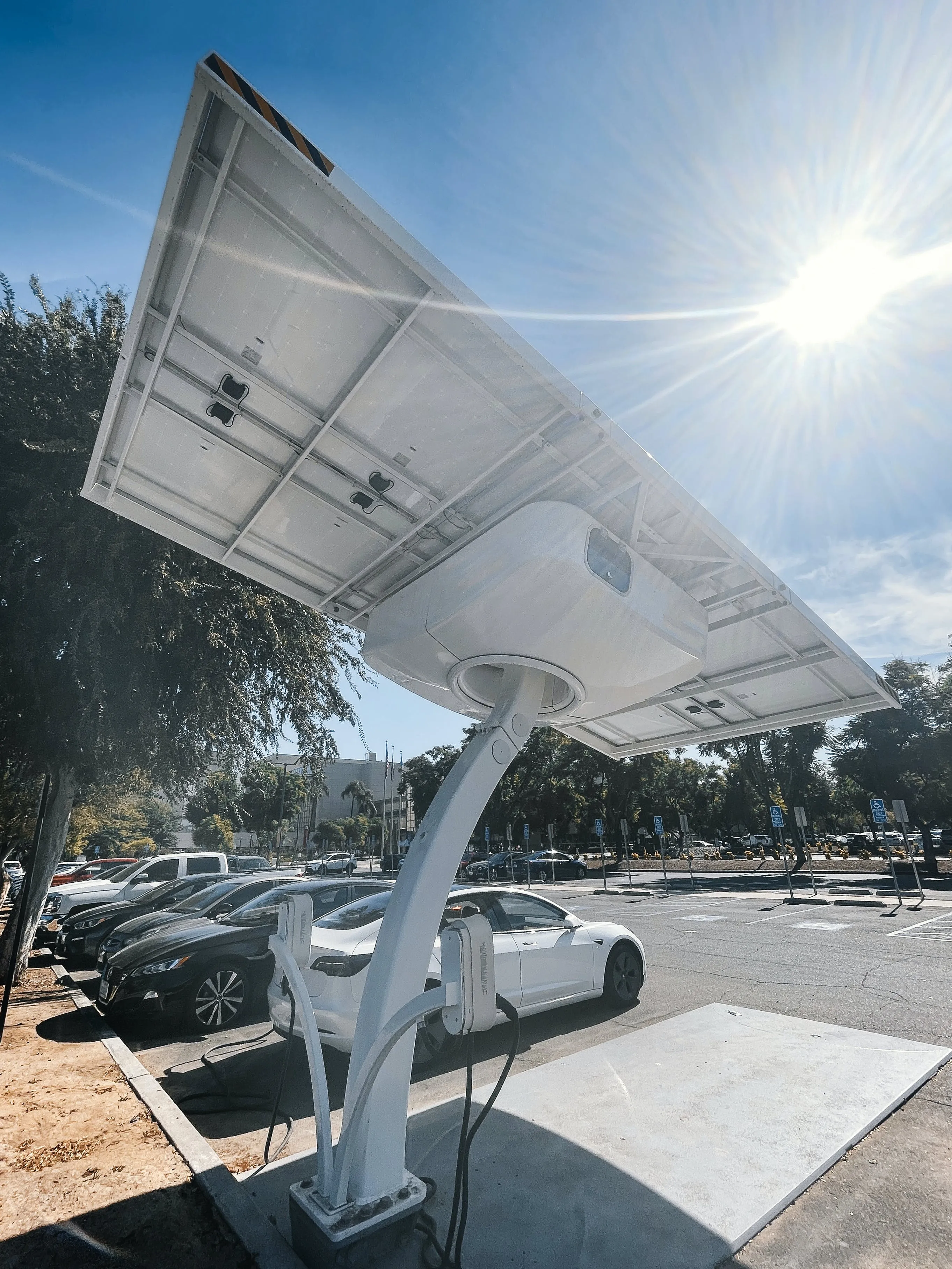If electric cars are ever to become mainstream, then we are going to need a lot more places to charge them.
The key is to find space for chargers where people would actually use them. Curbside is the obvious spot, but there chargers are competing for space with pedestrians, wheelchair users, and others.

One solution is to simply repurpose existing infrastructure, without adding extra clutter to the built environment.
For instance, lamppost electric vehicle (EV) charging is expanding. A big advantage of repurposing existing lampposts is that cities don't have to dig to lay new cables, says Artis Markots, the chief executive of the Latvian start-up SimpleCharge, focusing on Central and Eastern Europe.
There are no complex permitting requirements, and a lamppost can be complemented with an EV charger within an hour.
The cost is also considerably lower than a fixed charger, Mr. Markots reports, at roughly €1,500 ($1,6000; £1,300) per charger.
The Dutch company CityCharge also offers lamppost charging but with a different model that requires new cables to be installed. CityCharge replaces conventional lighting poles with aluminum poles.
These have sleek black boxes for the payment terminal and charger.
Excluding installation, costs are in the €3-4,000 range per pole.
Heimen Visser, CityCharge's chief executive, acknowledges that this is a bit more expensive than other on-street chargers. But he believes that this is essentially a 2-for-1 product, in which the pole's lighting and charging can be serviced together.
Lamppost charging makes it possible to blanket towns and cities with lots of non-rapid chargers. The models of both CityCharge and SimpleCharge can go up to 22kW - faster than slow overnight chargers but not as zippy as rapid chargers.
They can also operate 24/7.
However, Mr. Markots says that in places with older infrastructure, they're more likely to be for night-time charging while the streetlights are switched on.
The Shell-owned company ubitricity has been adding EV charging capacity not only to lampposts but also to bollards that it designs. Its bollards and lampposts offer charging at a typical rate of 5kW.
Some EV charging companies have been laboring over the design so that chargers are either unobtrusive or even visually appealing.
This includes chargers that are embedded into the ground - for example, pop-up chargers that can sink back into the pavement when they're not being used.
Trojan Energy is a Scottish company whose chargers sit flush with the pavement, resembling miniature manhole covers from the outside. Most passersby probably wouldn't even notice them.
The company has consulted with disability organizations to ensure that the chargers aren't hazardous to those with mobility or sight impairments, for instance.
Trojan Energy has been working with North London councils to site hubs of six to 15 charge points, mainly along residential streets without driveways, where drivers are dependent on street parking. "Rows and rows of terraced houses are perfectly suited to our solution," says Sarah Clements, Trojan Energy's head of business development.

Customers need a dedicated attachment, called a lance, and which weighs 2.7 kg, to use a Trojan Energy charging point. Billing is done automatically through the lance. So the potential inconvenience of carrying around an extra device might be offset by the convenience of plug-and-play charging.
Opening up the street, doing the civil and electrical work, and then restoring the pavement requires some time, of course. Installation takes about two weeks for each hub.

No comments:
Post a Comment